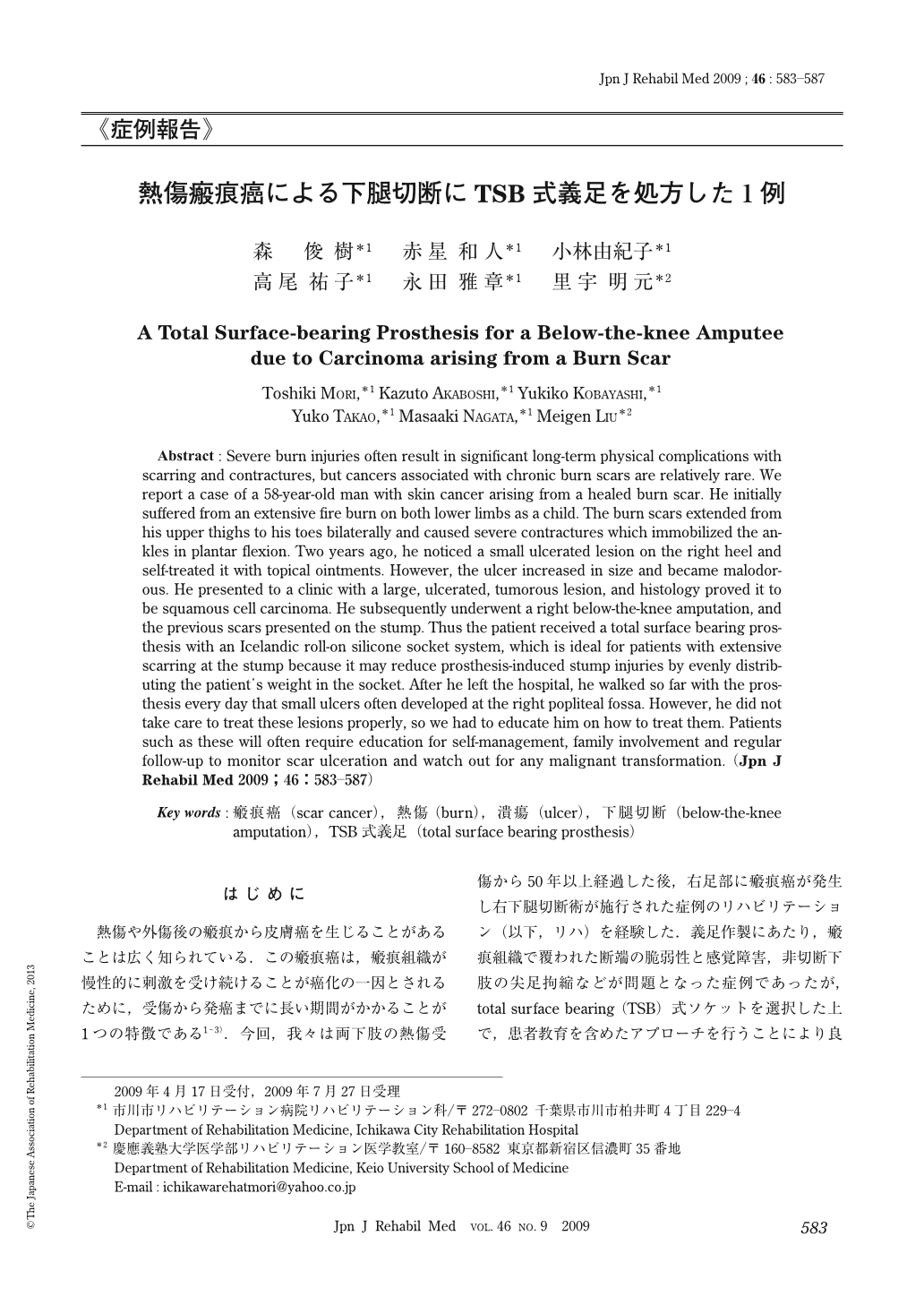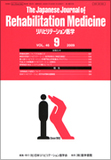Japanese
English
- 販売していません
- Abstract 文献概要
- 1ページ目 Look Inside
- 参考文献 Reference
はじめに
熱傷や外傷後の瘢痕から皮膚癌を生じることがあることは広く知られている.この瘢痕癌は,瘢痕組織が慢性的に刺激を受け続けることが癌化の一因とされるために,受傷から発癌までに長い期間がかかることが1つの特徴である1~3).今回,我々は両下肢の熱傷受傷から50年以上経過した後,右足部に瘢痕癌が発生し右下腿切断術が施行された症例のリハビリテーション(以下,リハ)を経験した.義足作製にあたり,瘢痕組織で覆われた断端の脆弱性と感覚障害,非切断下肢の尖足拘縮などが問題となった症例であったが,total surface bearing(TSB)式ソケットを選択した上で,患者教育を含めたアプローチを行うことにより良好な結果を得たので報告する.
Abstract : Severe burn injuries often result in significant long-term physical complications with scarring and contractures, but cancers associated with chronic burn scars are relatively rare. We report a case of a 58-year-old man with skin cancer arising from a healed burn scar. He initially suffered from an extensive fire burn on both lower limbs as a child. The burn scars extended from his upper thighs to his toes bilaterally and caused severe contractures which immobilized the ankles in plantar flexion. Two years ago, he noticed a small ulcerated lesion on the right heel and self-treated it with topical ointments. However, the ulcer increased in size and became malodorous. He presented to a clinic with a large, ulcerated, tumorous lesion, and histology proved it to be squamous cell carcinoma. He subsequently underwent a right below-the-knee amputation, and the previous scars presented on the stump. Thus the patient received a total surface bearing prosthesis with an Icelandic roll-on silicone socket system, which is ideal for patients with extensive scarring at the stump because it may reduce prosthesis-induced stump injuries by evenly distributing the patient's weight in the socket. After he left the hospital, he walked so far with the prosthesis every day that small ulcers often developed at the right popliteal fossa. However, he did not take care to treat these lesions properly, so we had to educate him on how to treat them. Patients such as these will often require education for self-management, family involvement and regular follow-up to monitor scar ulceration and watch out for any malignant transformation.

Copyright © 2009, The Japanese Association of Rehabilitation Medicine. All rights reserved.


